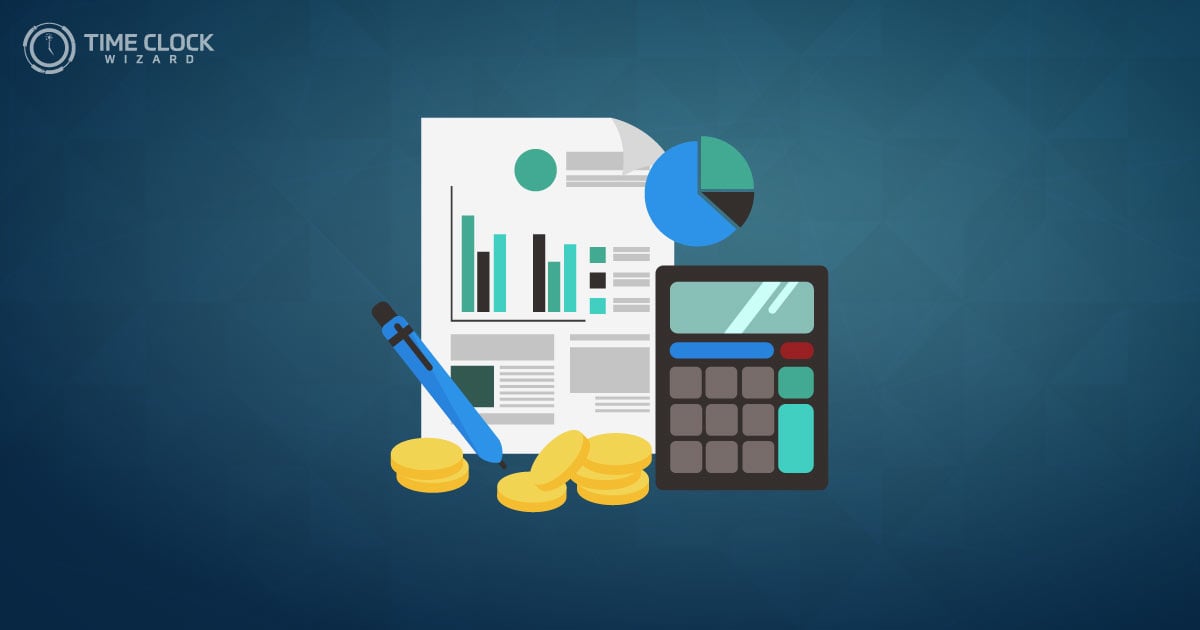
Understanding the best practices for payroll is crucial when you need to pay employees effectively and efficiently. Are you tired of navigating through complex payroll systems or worrying about compliance issues? We’ve got you covered! Let’s break down the essentials of a streamlined payroll process that ensures both happy employees and a compliant business.
Paying your employees shouldn’t be a headache. With the right approach and tools, you can transform this routine task into a seamless part of your business operations. In this article, we’ll explore top tips and strategies that help you pay employees with ease. Grab a cup of coffee, and let’s demystify payroll together! Who knew payroll could be this straightforward and stress-free? 🤓✅
Understanding the Basics of Employee Payroll Systems
Navigating the world of payroll systems can initially seem daunting, but understanding the basics is the first step to mastering how to pay employees effectively. Payroll systems are essential for any business employing staff, as they manage everything from wage calculations to tax withholdings.
But what exactly is a payroll system? At its core, it’s a mechanism, either manual or software-based, that processes employee pay accurately and consistently. It ensures that employees receive their salaries or wages on time, accompanied by the correct deductions and withholdings for taxes, benefits, and other payroll-related items. Why is this important, you ask? Well, incorrect payroll can lead to unhappy employees and potentially hefty legal penalties.
- Ensuring compliance with tax laws and employment regulations
- Automating calculations to reduce errors
- Keeping detailed records of all payroll transactions
Understanding these basics not only helps in ensuring compliance but also enhances the efficiency of your business operations. Have you ever pondered the potential time and money saved by automating these processes? Investing in a good payroll system can drastically reduce administrative burdens and help you focus more on growing your business. 🚀

Choosing the Right Payroll Software for Your Business
Choosing the right payroll software is a critical step in ensuring you pay employees efficiently and accurately. With the myriad of options available, it can feel overwhelming to pinpoint which tool fits your business’s unique needs. How do you sift through all the features to find what truly matters for your operations?
The process begins by identifying your key payroll requirements. Do you need software that integrates seamlessly with your existing HR systems? Are you looking for cloud-based solutions that allow remote access? Perhaps, compliance with tax regulations is a top priority for your industry? By clearly delineating your needs, you can narrow down your choices significantly.
- Ease of use and user interface
- Compliance features and legal safeguards
- Integration capabilities with other software
- Cost-effectiveness and scalability options
Don’t forget to consider user reviews and expert opinions! What are other businesses in your industry using? Frequently, they will have tackled similar challenges and can provide valuable insight into which software rises to the occasion. Also, free trials can be a golden opportunity to test out the feasibility of a product before making a long-term commitment. Have you evaluated how these factors influence your final decision?
Streamlining Payroll: Tips and Tricks for Efficiency
Streamlining your payroll process is crucial not only for the efficiency of managing employee compensations but also in ensuring timely and accurate payroll execution. With the right strategies, you can significantly enhance your ability to pay employees effectively.
Firstly, automating as much of the payroll process as possible can save you a heap of time and minimize errors. Have you considered implementing cloud-based payroll software? These platforms often come equipped with features that calculate payments, deduct taxes, and even send out pay stubs automatically. It’s like having a virtual payroll assistant!
Essential Tips for Streamlined Payroll
- Integrate your payroll system with other HR systems to ensure consistency and reduce duplication of effort.
- Regularly update and audit your payroll system to catch any discrepancies early.
- Train your finance team on the latest payroll compliance to avoid legal pitfalls.
Each of these tips can contribute to a smoother, more reliable payroll system. Remember, the goal is to spend less time on administrative tasks and more on growing your business. Why not give these tricks a try? Efficient payroll management is a stepping stone to overall business success. 😊

Legal Requirements for Paying Employees in the US
Navigating the maze of legal requirements to pay employees in the US can feel daunting, but it’s crucial for maintaining compliance and avoiding hefty fines. Each state has its own set of rules, which can significantly differ, so knowing the specifics for where your business operates is essential. Are you fully aware of the minimum wage laws, overtime pay regulations, and payroll tax requirements in your state?
Key Federal Laws to Consider
At the federal level, the Fair Labor Standards Act (FLSA) sets the baseline for wages and hours worked, ensuring minimum wage and overtime pay. The IRS also mandates accurate withholding of taxes and timely tax payments. Non-compliance can lead to audits and penalties that no business owner wants to face!
Importance of Record Keeping
To ensure your business is fully compliant when you pay employees, it’s advisable to consult with a payroll specialist or use reliable payroll software tailored to the legal landscape of your location. This proactive approach not only helps in adhering to the law but also streamlines your payroll processes, making them more efficient and less prone to errors.
Common Payroll Mistakes and How to Avoid Them
Navigating the complexities of payroll is crucial for any business aiming to pay employees efficiently and legally. Mistakes here can not only cost financially but also harm employee trust and negatively impact morale. Are you aware of the common pitfalls? Let’s explore some frequent payroll errors and how you can steer clear of them.
Misclassifying Employees
A typical error that can have significant repercussions is the misclassification of employees as independent contractors. This mistake can lead to hefty penalties and back payments of entitlements. To avoid this, ensure you understand the legal distinctions between different types of employment and apply them accurately when setting up payroll.
Ignoring State and Local Tax Requirements
It’s easy to overlook the specific requirements of state and local taxation, especially if your business operates in multiple regions. This oversight can lead to incorrect withholdings and subsequent fines. Make it a point to constantly update your payroll system with the latest tax codes from local authorities.
Inaccurate Record Keeping
Inaccurate or incomplete payroll records can create a nightmare during audits and can hinder your ability to pay employees accurately. Regular audits of your payroll records and employing a robust payroll software can greatly reduce these risks. Isn’t it worth taking these steps to protect your business and ensure your team is compensated properly?
Common Questions
What is paying employees called?
Paying employees is commonly referred to as payroll. This term encompasses the process of calculating, managing, and distributing wages and salaries to employees. Payroll is a crucial aspect of business operations, ensuring that all employees receive their rightful earnings for their work in a timely and accurate manner. It involves various tasks including withholding taxes, managing deductions for benefits, and adhering to employment laws.
How should you pay employees?
Employees should be paid through a systematic and consistent payroll process that adheres to both legal and contractual obligations. Employers can choose to pay their employees using different methods such as direct deposit, paychecks, or even cash payments, although direct deposit is the most common and often considered the safest and most efficient method. The payroll process should also include accurate calculation of wages based on hours worked and pay rate, as well as the deduction of appropriate taxes and contributions for social security, healthcare, and other benefits. It’s essential to maintain transparency and accuracy to ensure compliance with labor laws and to uphold employee trust and satisfaction.
How is the employee paid?
An employee can be paid in several ways, depending on the company’s payroll policies. The most popular methods include direct deposit, where wages are electronically transferred from the employer’s bank account to the employee’s bank account, which is efficient and secure. Alternatively, some employers may issue paper checks or even use cash, although these methods are less common. Payroll cards are another option, particularly for employees without traditional bank accounts. Employers need to ensure timely and accurate payment in accordance with employment contracts and regional labor laws.
Best Practices for Payroll Documentation and Records
Maintaining impeccable payroll documentation and records is essential to streamline the process of paying employees. Did you know that proper documentation can save you from any legal or financial pitfalls in the future? It’s not just about compliance; it’s about creating an efficient payroll system that supports both the employer and the employees.
Key Records to Maintain
- Employee’s personal information
- Hourly rates and salary details
- Timekeeping records
- Tax withholdings and payments
- Benefits and deductions information
When it comes to paying employees, how meticulous are you with your record-keeping? Ensuring that these documents are accurately maintained and easily accessible can significantly reduce the time spent on each pay cycle. Moreover, it helps in making informed decisions when planning financial budgets or during audits.
Document Storage and Security
Storing payroll records securely is just as crucial as maintaining them. Have you considered digital solutions for record-keeping? Utilizing digital platforms not only ensures security but provides the convenience of accessing records anywhere, anytime. Furthermore, digital records are easier to manage and update, making them invaluable for efficient payroll management.
Final Thoughts: Best Practices for Payroll: How to Pay Employees Effectively
Now that you’ve delved into the essentials on how to pay employees efficiently and navigated through the maze of legal requirements and software solutions, what’s next for your business? Implementing the best practices for payroll not only ensures compliance but also boosts your team’s morale by guaranteeing timely and accurate pay. Why not take the next step today and redefine how you manage your payroll system with confidence and ease?
After digesting all this critical information, remember the importance of staying updated with the latest trends and regulations in payroll management. By doing so, you steer clear of common pitfalls and position your business for seamless operational success. Ready to make payroll headaches a thing of the past? Embrace these strategies, and watch as your payroll processes transform into a straightforward, stress-free component of your business operations! 🌟





